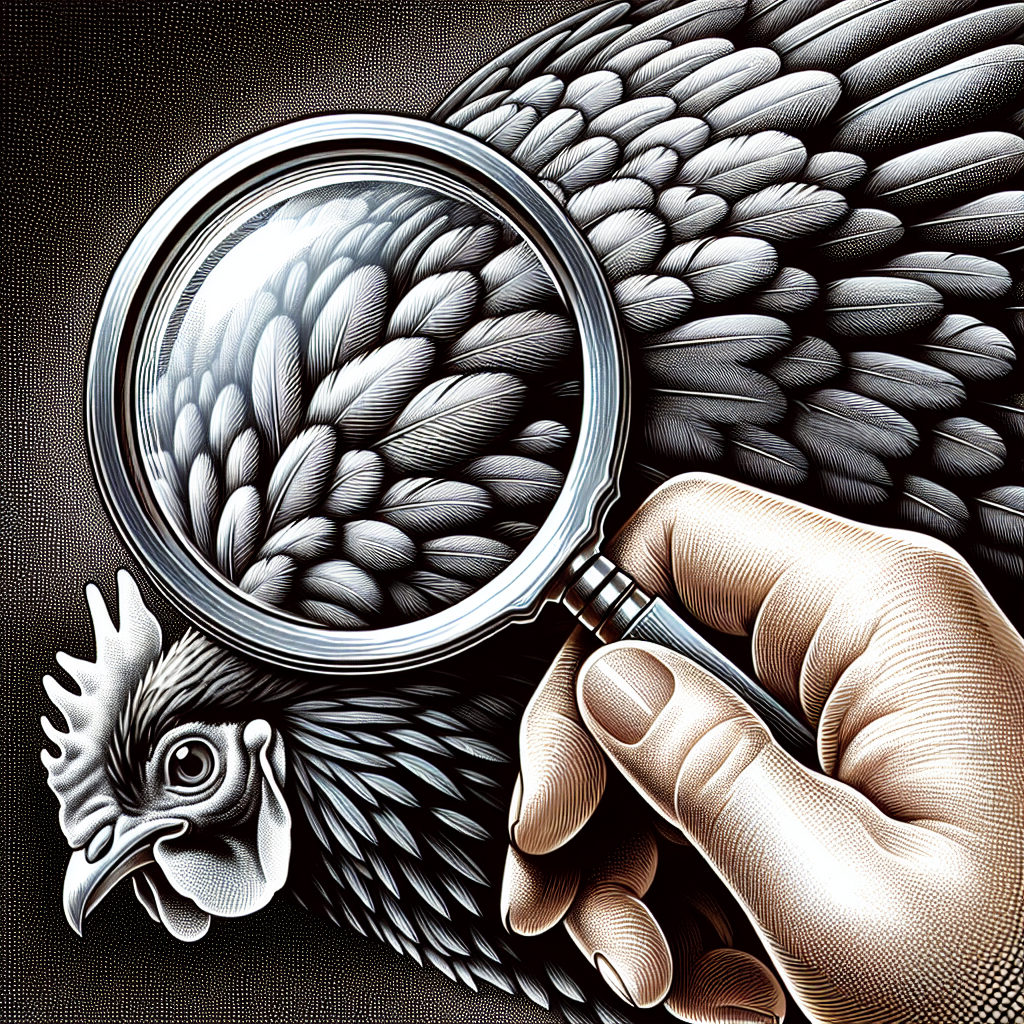In this article, we will explore effective strategies for addressing aggressive behaviors among flock members. When it comes to managing a group, whether it be a team in the workplace or a community organization, conflicts and disagreements can arise. Understanding how to handle these situations in a friendly and empathetic way is crucial for maintaining harmony and productivity within the group. Let’s delve into some practical tips and techniques that will help you address and resolve aggressive behaviors among your flock members.
Understanding Aggressive Behaviors
Definition of Aggressive Behaviors
Aggressive behaviors in a flock refer to any actions or conduct displayed by members that are intended to harm or dominate others. These behaviors can range from physical attacks, such as pecking or biting, to more subtle forms of aggression like chasing or displacing other individuals. Understanding the definition of aggressive behaviors is crucial in identifying and addressing them within a flock.
Types of Aggressive Behaviors
Aggressive behaviors can manifest in various ways within a flock. Some common types include:
-
Physical Aggression: This type involves physical attacks such as pecking, biting, or kicking other flock members, causing physical harm.
-
Verbal Aggression: Verbal aggression is displayed through loud vocalizations, screeching, or other vocal signs of discomfort or aggression, often accompanied by aggressive body language.
-
Territorial Aggression: When a flock member becomes possessive of specific areas, such as feeding spots or roosting spaces, they may display territorial aggression towards other individuals who try to approach or enter those areas.
-
Dominance Aggression: Dominance aggression occurs when a member attempts to establish or maintain their position at the top of the flock hierarchy by intimidating or asserting control over others.
Understanding these different types of aggressive behaviors enables flock owners to identify and address them effectively.
Common Causes of Aggressive Behaviors
Aggressive behaviors among flock members can have various underlying causes. It is essential to understand these causes to address them appropriately and create a harmonious flock environment. Some common causes of aggressive behaviors include:
-
Resource Competition: Limited access to food, water, or space can trigger aggressive behaviors as flock members compete for essential resources.
-
Breeding Season: During breeding season or when certain individuals display hormonal changes, aggressive behaviors may increase due to territoriality and mating-related competition.
-
Stress or Fear: Flock members experiencing stress or fear, such as environmental changes, predator threats, or lack of socialization, may exhibit aggressive behaviors as a defensive mechanism.
-
Imbalance in Flock Hierarchy: If the hierarchy within the flock is disrupted or unclear, aggressive behaviors may arise as individuals challenge or contest social positions.
Understanding these common causes helps flock owners take proactive measures to prevent and address aggressive behaviors effectively.
Recognizing Aggressive Behaviors
Signs of Aggressive Behavior
Recognizing aggressive behaviors is crucial to intervene early and prevent further escalation. Some common signs of aggressive behavior among flock members include:
-
Physical Altercations: Frequent physical fights, pecking, biting, or continuous aggression towards specific individuals indicate aggressive behavior.
-
Fearful Reactions: Flock members who appear fearful, anxious, or constantly on edge when interacting with certain individuals may be targeted by aggression.
-
Body Language: Aggressive flock members often display assertive body language, such as raised head feathers, spread wings, erect posture, or staring down others.
-
Vocalizations: Aggression can be accompanied by loud, aggressive vocalizations that signify discomfort or a desire to dominate.
By paying close attention to these signs, flock owners can identify aggressive behaviors and take necessary steps to address them effectively.
Observing Interactions within the Flock
Regularly observing the interactions within the flock is vital to identify patterns and potential triggers for aggressive behaviors. Take note of how flock members interact during feeding, watering, and roosting, as these daily activities can often lead to conflicts. Notice if certain individuals are consistently targeted or if specific areas provoke aggression. By closely monitoring flock dynamics, flock owners can gain valuable insights to tackle aggressive behaviors and implement appropriate prevention and intervention strategies.
Preventing Aggressive Behaviors
Establishing a Positive Environment
Creating a positive environment within the flock is essential to prevent aggressive behaviors. Some measures to establish a positive flock environment include:
-
Providing Sufficient Space: Ensure that your flock has enough space to roam, roost, and engage in natural behaviors. Overcrowding can significantly contribute to stress and aggression.
-
Offering Environmental Enrichment: Provide mental and physical stimulation through the use of toys, perches, and environmental enhancements. This prevents boredom and reduces the likelihood of aggression borne out of frustration.
-
Promoting Socialization: Encourage positive social interactions by gradually introducing new flock members and monitoring their integration. Well-socialized individuals are less likely to display aggression.
By creating a positive flock environment, flock owners can minimize stress and competition, reducing the likelihood of aggressive behaviors.
Providing Adequate Space and Resources
Resource availability plays a crucial role in preventing aggressive behaviors among flock members. Ensure that there are ample food and water stations throughout the flock’s living space, minimizing the need for competition and aggression. Providing multiple feeding and watering stations avoids dominance-based aggression that may arise from limited access to essential resources. Adequate space and resources promote a harmonious flock environment where aggression is less likely to occur.
Implementing Effective Leadership
Establishing effective flock leadership can significantly reduce aggressive behaviors. As the flock owner, it is your responsibility to assume the role of a calm and confident leader. Some ways to implement effective leadership include:
-
Proper Handling: Handle flock members gently and avoid aggressive or rough handling practices that may lead to fear or defensive aggression.
-
Consistent Training: Train your flock using positive reinforcement techniques to establish trust, obedience, and respect. Clear communication and consistent reinforcement promote a healthy hierarchical structure.
-
Role Modeling: Demonstrate calm and authoritative behavior during interactions with the flock. Lead by example and establish yourself as a reliable authority figure.
By implementing effective leadership strategies, flock owners can establish a sense of order, reducing the likelihood of aggressive behaviors.
Addressing Aggressive Behaviors
Isolating Aggressive Individuals
If aggressive behaviors persist despite prevention efforts, isolating the aggressive individual may be necessary. Temporary isolation gives the aggressive flock member time to calm down and prevents them from causing further harm. Provide a separate enclosure with essential resources until the individual demonstrates improved behavior. This step also protects the well-being of other flock members and allows them to interact without fear of aggression.
Redistributing Hierarchy and Establishing a New Pecking Order
If a disruption in the flock hierarchy is identified as a cause of aggression, it may be necessary to redistribute the hierarchy and establish a new pecking order. This process involves isolating and reintroducing flock members strategically to readjust social positions and reduce dominance-related aggression. Careful observation and guidance throughout this process are crucial to ensure a smooth transition and minimize potential conflicts.
Environmental Enrichment
Environmental enrichment techniques can be employed to address aggressive behaviors. Introducing new toys, perches, or hiding spots provides mental and physical stimulation, redirecting the flock’s energy away from aggression towards more constructive activities. Environmental enrichment can reduce stress and boredom, positively influencing flock dynamics and mitigating aggressive behaviors.
Behavior Modification Techniques
Behavior modification techniques involving positive reinforcement can be used to address aggressive behaviors within the flock. Reward desired behavior, such as peaceful interactions or respectful sharing of resources, with treats or attention. This encourages flock members to adopt more desirable behaviors while discouraging aggression. Consistency, patience, and clear communication are vital when implementing behavior modification techniques to ensure long-lasting behavioral changes.
In conclusion, understanding, recognizing, preventing, and addressing aggressive behaviors among flock members are crucial responsibilities for flock owners. By creating a positive environment, providing adequate space and resources, and implementing effective leadership strategies, aggressive behaviors can be minimized. It is essential to observe flock interactions, identify potential triggers, and promptly intervene when necessary. By addressing aggression early on and employing appropriate techniques, a harmonious and peaceful flock environment can be established for the well-being of all members.




